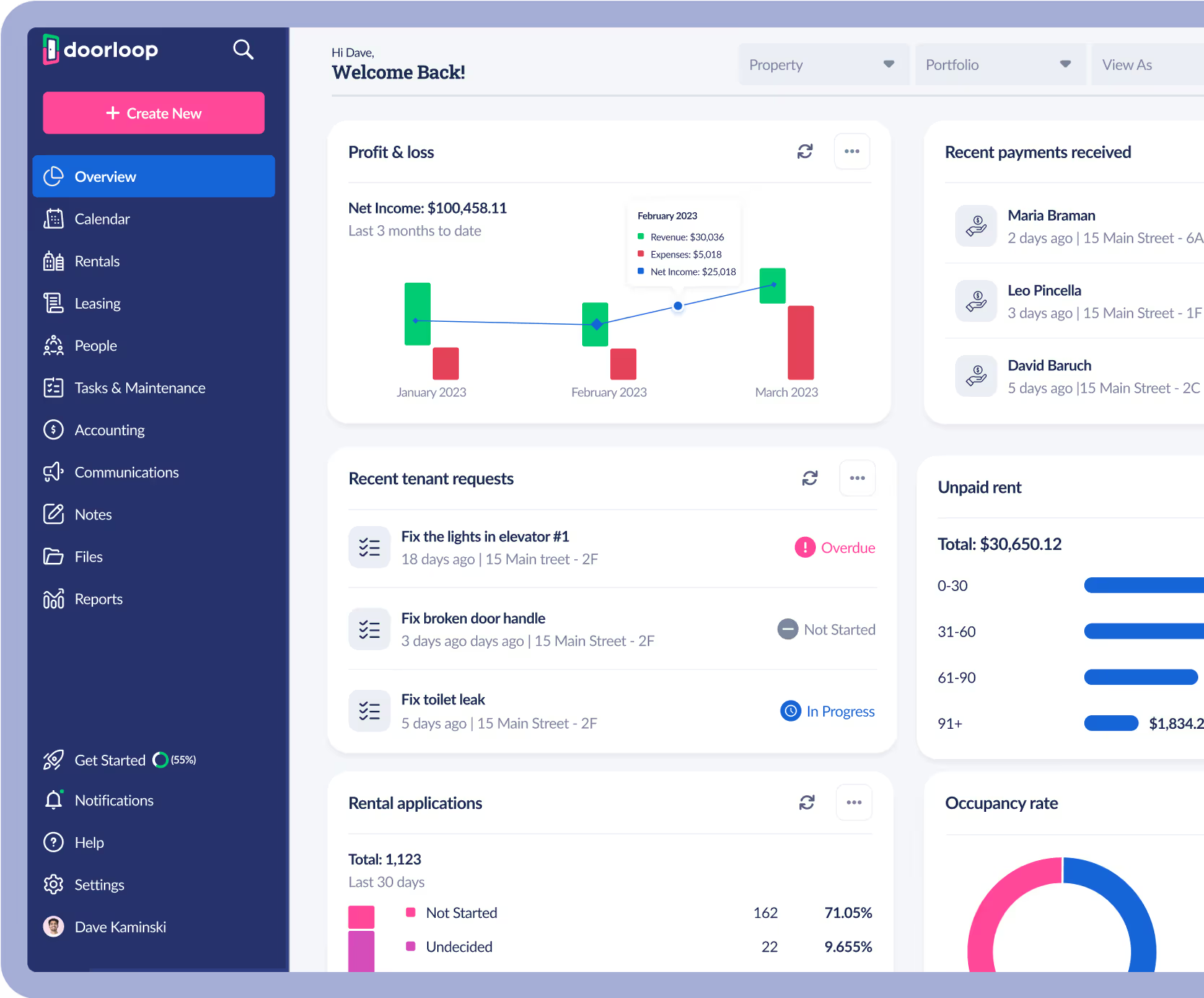When it comes to a lease agreement between a landlord and tenant, pet rules are a common discussion element.
While some rental agreements include pet rules in their terms and conditions, some others don't, which leaves the tenant wondering if they're allowed to bring their service animal or pets into the rental property. This is all resolved with what is called a pet addendum.
People can state their rules for pets and service animals through this legally binding contract. A pet addendum is mainly used as legal permission for the tenant to have pets on the property.
In this post, we will discuss all the information and details regarding pet addendums and whether it's a good choice for landlords to include them in a lease agreement. If you want or need specific legal advice tailored to your case, make sure to seek a real estate manager or lawyer at any time to help you.
What is a Pet Addendum in a Rental Agreement?
Overall, these are legal documents that a landlord and tenant can use to determine the landlord's conditions to allow the tenant to keep their pets on the property.
A pet addendum (also known as a pet agreement) can be added to the rental agreement through an amendment, making it a part of the standard documents.
Generally, the property owner is the only one capable of deciding if the tenant can keep their pet or service animal inside the rental unit; in that sense, the landlord has the final say. If the landlord and tenant sign a pet addendum, the landlord allows pets in their unit as long as the tenant is fully responsible for the pet and any damages that it may cause during the tenancy.
It's important to note that a pet is not the same as a service animal. In most states, the latter is not seen as a pet (according to local laws). If this is the case, the landlord must provide the tenant with a special clause in the rental agreement to keep service animals inside the property.
Why add a Pet Addendum?
Some people don't give too much importance to including a pet addendum in the rental agreement. While it's not a legal requirement in most states, having a document with information on the tenant's legal rights to keep a pet on a property can protect all the parties involved in the future.
Overall, adding a pet addendum to the lease is an excellent idea whether the landlord wants to allow pets into their unit or not. First, adding a pet addendum to the lease can attract prospective tenants since some of them already have a pet they need to bring to the unit. Considering that few places allow pets, it could be a significant competitive advantage over other landlords in the area. On the other hand, the landlord might get a lower turnover rate and higher revenues.
On the other hand, some landlords prefer not to allow pets on their property since they can be exposed to pet damage, noise complaints, and other related issues.
Ultimately, it's up to the landlord to decide whether or not they want to allow animals. However, adding a pet addendum can positively impact their unit.
Keep in mind that adding a pet addendum to a lease also serves as a protective measure against any legal disputes in the future. This is because these agreements include all the rules for allowing an animal into a unit. If a dispute were to happen, the landlord or tenant could use the pet addendum as proof of everything that was agreed upon.

Lease Agreement Details to Include
A pet addendum may include different pieces of information depending on the state and the landlord's needs. However, if you want to create a valid contract that you can include in your lease, some specific details should always be in the agreement.
Overall, here are the most frequently included clauses in a pet addendum:
Information of the Tenant:
Name and contact of the tenant/owner of the animal.
Information of the Landlord:
Name and contact of the owner of the unit.
Description of the Premises:
Accurate description of the rented unit where the pet is staying (address, size, available utilities, etc.)
Description of the Animal:
Accurate description of the animal that's going to stay in the unit; this includes details such as the pet's name, breed, type, gender, age, weight, and color.
Pet Fees:
In some states, the landlord is allowed to charge an additional "Pet Fee" to allow the animal to be on the premises; this pet fee is usually a non-refundable, one-time payment.
Pet Security Deposit:
A pet security deposit is an amount of money given to the landlord at the beginning of the tenancy period. If the pet doesn't cause any new damage to the unit, that security deposit must be returned to the tenant.
Additional Rent Payments:
A landlord may be allowed to charge a small amount of extra rent every month if the animal causes prolonged damages to the unit.
Vet Contact Information:
If the animal is currently seeing a veterinary, the tenant must provide the vet's name and contact data in emergency cases.
Date of the Lease:
The specific day in which the original agreement is being amended with the pet addendum.
Additional Questions Regarding the Pet:
In here, the landlord may ask any additional questions that they may consider appropriate for the pet agreement document in the lease. The landlord can request data regarding past violent behavior, people responsible for taking care of the dog if the tenant isn't in the unit, etc.
Both landlord and tenant need to ensure that every clause mentioned above is properly answered before they sign the agreement. When both parties sign this form, the tenant becomes entirely responsible for the animal and the damages it could create for the unit.
It's important to note that the landlord might reserve the right to refuse a specific kind of animal into their unit if it doesn't fit the required rules and criteria.
Pet Agreement Clauses
While the clauses mentioned above are enough for both parties to agree on a pet addendum, there are some additional clauses that the landlord could consider appropriate for their case.
Pet Deposit
If state laws permit it, the landlord can include a refundable pet deposit to cover damages made by the animals in the unit. It's important to note that these terms can be different for each state, so you should always check before creating this kind of clause.
No Limit Liability
This clause is used to specify that the pet deposit and extra rent are not limited to the tenants' liability; this means that the tenant is responsible for additional rent costs needed to repair the unit.
Violation Fees
A pet addendum should include a "Violation" clause if the tenant or the animal breaches the terms of the new agreement. If you don't include this, the tenant could feel like there's no consequence of allowing their pet to do anything it wants to the unit. However, make sure that the fee that you charge is reasonable so that your local laws permit it.
Housebroken Pets
Housebroken pets are animals that are trained to urinate and defecate in designated indoor areas or outdoors. If you're allowing pets in your rental unit, make sure to permit only housebroken pets. A good way of doing this is specifying a minimum age for the pet before being allowed inside the unit.
Pet Restrictions
This clause's purpose is to specify the rules for the allowed pets. The landlord can choose the criteria they like since these restrictions depend on the unit.
You can search on the internet for some examples of restrictions, but the most common ones are the pet's max allowed weight, prohibited animals or breeds, etc.
Special Requirements
If you need tenants to specify certain requirements for their pets, you can use the pet addendum to do it. These are general provisions that the tenants and their pets must comply with during the lease.
Here is an overview of some of the most common rules in a pet addendum:
- Clean up any waste the pet creates.
- The pet must not disturb other people nearby.
- The pet should be kept away from prohibited areas in the unit.
- Search for someone to look after the pet when the tenants are not at home for a long time.
- Supervise the pet when it's outdoors.
- Comply with local ordinances for pets.
Conditions to Remove a Pet from the Premises
There might come a time when the pet might not be considered safe to be in the unit anymore. In these cases, the landlord must include a new clause that allows them to remove the pet from the premises if it poses a threat to other people, violates the clauses of the pet addendum, causes prolonged damage to the unit, or if the tenants have neglected it.
Liability for Damage
The landlord can use a pet addendum to hold tenants responsible for repairing or cleaning costs that the unit needs due to their pet.
Other Names
While the general name used for this legal contract is "Pet Addendum" or "Pet Agreement," some landlords and tenants give it other names that are also legally valid.
Here is the complete list of additional names that an addendum for pets can get, and you can use any one you want:
- Consent for Pets with Conditions Letter
- Landlord Letter of Consent for a Pet
- Pet Permission Letter
- Landlord Permission Letter for a Pet
- Landlord Authorization Letter for a Pet
- Lease Addendum for Pets
- Pet Addendum to Lease
- Pet Addendum Agreement
- Tenant Authorization Letter for a Pet
- Pet Agreement for Rental
- Pet Rental Agreement
- Rental Unit Pet Policy
Cons of No Clauses
There are several disadvantages to not including an addendum in your lease. Here is a list of some of the cons of not including this type of amendment:
Consequences for the Landlord:
- Trouble finding tenants after a dispute regarding pets.
- Inability to handle unexpected damages or injuries caused by the animal.
- Evicting the tenant might take more time than usual.
- Failure to tolerate loud noises caused by a new pet.
- Possibility of having to pay an HOA penalty.
Consequences for the Tenant:
- Trouble finding a new home for their pet.
- Possibility of having to pay someone else to take care of the new pet.
- Possibility of having to pay penalties.
- Inability to have their pet at home.
Rental Agreement Samples
If you need some help drafting your addendum, you may seek legal advice or search for a sample of these forms online.
Generally, you can find many samples for free, but if you want to save some time, here are some free forms in PDF format that you can get for your case:
- First Example
- Second Example
- Third Example
Don't forget to explore our top 27 lease agreement clauses to include in every rental agreement.

Conclusion
Pets are a big responsibility in every case. If the landlord or tenant wants to agree on any pet criteria, they need to draft a pet addendum since it's the most comfortable option for everyone involved.
Remember that if you need help tailored for your case, make sure to seek a real estate manager or lawyer.
To access DoorLoop's plethora of downloadable resources, click here!
































.svg)
.svg)

